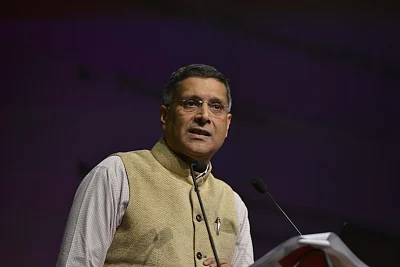New Delhi, Jan 29 (IANS) Resolving the non-performing assets (NPAs), or bad loans, of state-run banks and implementing GST are among the major factors that will help India log GDP growth of 6.75 per cent in the current fiscal, says the Economic Survey for 2017-18 tabled in the Lok Sabha by Finance Minister Arun Jaitley on Monday.The Survey also cited the recapitalisation plan for government-owned banks, the recent easing on foreign direct investment (FDI) rules and boosting of Indian exports amidst a global recovery as other factors underpinning its gross domestic product (GDP) growth projection, which is higher than the 6.5 per cent growth projected last month by the Central statistics Office (CSO)."Decisive action was taken to grasp the nettle of the Twin Balance Sheet (TBS) challenge, arguably the festering, binding constraint on Indian growth prospects. On the 4 R's of the TBS -- Recognition, Resolution, Recapitalization and Reforms -- Recognition was advanced further, while major measures were taken to address two other R's," the Survey, authored by Chief Economic Advisor (CEA) Arvind Subramanian, said. "The new Indian Bankruptcy Code (IBC) has provided a resolution framework that will help corporates clean up their balance sheets and reduce their debts. And, in another critical move, the government announced a large recapitalisation package (about 1.2 per cent of GDP) to strengthen the balance sheets of the public sector banks (PSBs)," it read."As these twin reforms take hold, firms should finally be able to resume spending and banks to lend especially to the critical but-currently-stressed sectors of infrastructure and manufacturing," it added. The roots of the NPAs in the Indian banking system, which have reached a staggering nearly Rs 9 lakh-crore (almost $142 billion) lie in the boom period during the previous decade under the United Progressive Alliance (UPA) rule. The bad loans of state-run banks alone add up to around Rs 7.5 lakh-crore.The Reserve Bank of India has referred 12 accounts, totalling about 25 per cent of the gross NPAs, for resolution under the new Insolvency and Bankruptcy Code (IBC).The government has embarked on a two-pronged strategy on bad loans. On the one hand, it has brought in the IBC which provides for a six-month time-bound insolvency resolution process, while on the other, it has approved a Rs 2.11 lakh-crore recapitalisation plan for the PSBs.On the government's fiscal deficit, the Survey said that ambitious targets of fiscal consolidation for the coming pre-election year be avoided, hinting thereby that the target of 3.2 per cent of the GDP could be exceeded."Reflecting largely fiscal developments at the Centre, a pause in general government fiscal consolidation relative to 2016-17 cannot be ruled out," said the Survey. It also said that market concerns over Rs 500 billion of additional market borrowings to a proportionate widening of the fiscal deficit for the current fiscal were unfounded because this mop-up could go hand-in-hand with lower withdrawals from the National Small Savings Fund.--IANSbc/nir
(This story was auto-published from a syndicated feed. No part of the story has been edited by The Quint.)
(At The Quint, we question everything. Play an active role in shaping our journalism by becoming a member today.)
